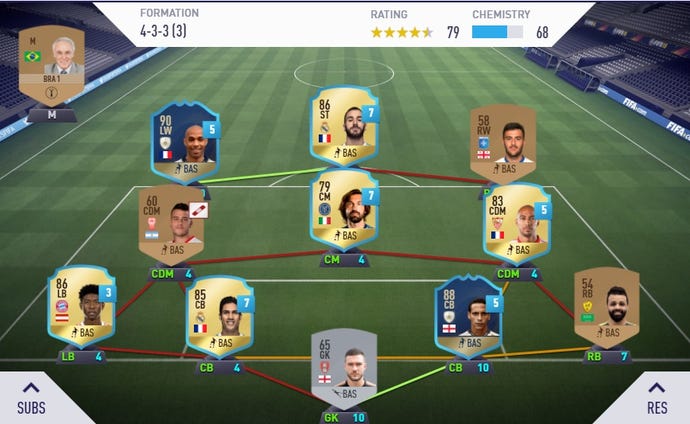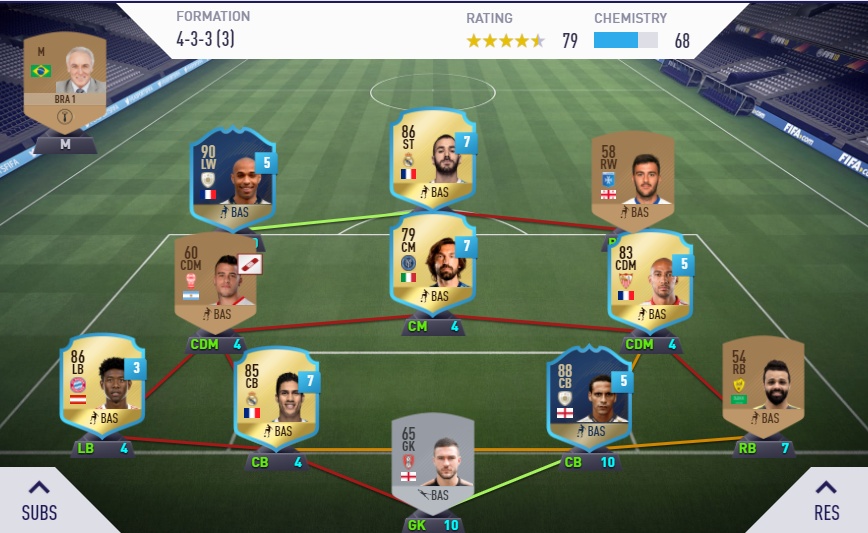FIFA 18 tips: how does Chemistry work - styles, ratings, linking players, positions and cards
Getting your team chemistry right is vital in order to squeeze every last drop of potential from your players, so don’t overlook it.
Before you go in on our guide to chemistry, first check out this beginner's guide to FIFA 18 and FUT, and take a look at ways to earn FIFA 18 Coins easily. Also, remember that Chemsitry is crucial to team success, so read up on the best teams for different leagues. Done that? Right, let's talk chemistry...
FUT chemistry takes three forms: player chemistry, team chemistry and chemistry style. Read on to understand them all and how to take advantage of what they can offer.
First, an introduction…
What does chemistry actually do?
Simply, chemistry affects – positively or negatively – the attributes of the players you decide to put on the pitch.
A high chemistry rating can see your players’ individual stats rise dramatically, turning a very average silver-ranked player into a solid gold performer.
Low chemistry has the opposite result; reducing the players’ abilities and, therefore, limiting your options when it comes to deciding how to utilise them.
The primary impact of FUT’s chemistry concept is to make you think about how you construct your team. Rather than simply pick and choose whichever players are your favourites from real-life, you have to think more carefully about how individuals are altering the performance levels of those around them.
Putting together the best FUT team, then, is about more than merely being able to name the world’s 11 best players.
Chemistry ratings
Each player has an individual chemistry rating, which can be viewed by going to your ‘Active Squad’ page and flicking the right stick once to the right to change the view to display each player’s details.
In this view you’ll see a player’s nationality, as well as their current real-life club and the league they play in. The blue bar and number underpinning each player card represents their individual chemistry, with a rating of 10 being the best possible.
Overall team chemistry is displayed in the top right corner of the screen, with a maximum rating of 100. If most of your players are hitting a 10 for individual chemistry then you’re going to be scoring a 100 for team chemistry, a rating that can increase each player’s attributes by up to 10 points in each category.
How to increase chemistry - Linking Players
Positioning players that have things in common next to one another on the pitch has a huge impact on their individual chemistry and, subsequently, on team chemistry. The lines linking players in your formation tell you how much chemistry they have with one another: red means no chemistry, orange is average and green is excellent.
To achieve green they need to have things in common in terms of their club, league and nationality. For example, if you place Eden Hazard and Romelu Lukaku next to each other you will see their link turn green because they’re both Belgian and they both play in the Premier League. Orange links are the result of just one thing in common: Eden Hazard and Harry Kane would create an orange link because they are both in the Premier League, but that’s where the commonalities end.
Things can get complicated when you have to think about many links into and out of a single player, which is common for central midfielders. For this reason you might want to start your chemistry building process by locking in a central midfielder and going from there.
How to increase chemistry - Player Positions
Placing players in positions they’re comfortable in has a positive affect on chemistry. A player’s position is marked below their card on your squad screen, its colour communicating how happy they are in that role. Green means very happy, yellow is average and red means they’re totally unsuitable for the job.
Playing players out of position decreases their own chemistry and that of everyone around them. For that reason, it’s not a good idea to try to cram all of your favourite attackers into midfield roles simply because you’re personally fond of them.
How to increase chemistry – extra tips
If you absolutely want to fit a specific player into your team even though you can’t create perfect chemistry by doing so then there is a solution for those with a lot of time on their hands.
A player’s personal chemistry rating will increase by a point once they’ve played 10 games for your club. That rise can be enough to push your overall chemistry score from 90 to 100 if the rest of your team is linked together properly.
In FUT you also choose a manager and this alters overall chemistry. Every player that is of the same nationality or league as your manager will get a chemistry boost. In essence, then, it’s a good idea to base your teams around players/a manager from a specific country or league.
It’s also worth noting that players reduce in fitness levels after each game, which limits their physical stats – such as jumping, acceleration, etc. A team with maximum chemistry isn’t going to see all the benefits of that it they’re not fit, so don’t forget to use consumable cards on your players whenever necessary.
Chemistry Cards
There is also a selection of cards that can be applied to individual players that alter their base stats in very specific ways. For instance, if you’re not happy with Roberto Firmino’s goal scoring ability then you can apply a ‘Sniper’ chemistry card – the result of which is to improve a player’s shooting and dribbling stats.
Alternatively, if you want Man City’s Fernandinho to be more of a creative midfielder then you can use the ‘Artist’ chemistry card, which improves dribbling and passing.
The higher a player’s individual chemistry, the more impact chemistry cards have. Therefore, only apply them once you’ve got everything else worked out.









